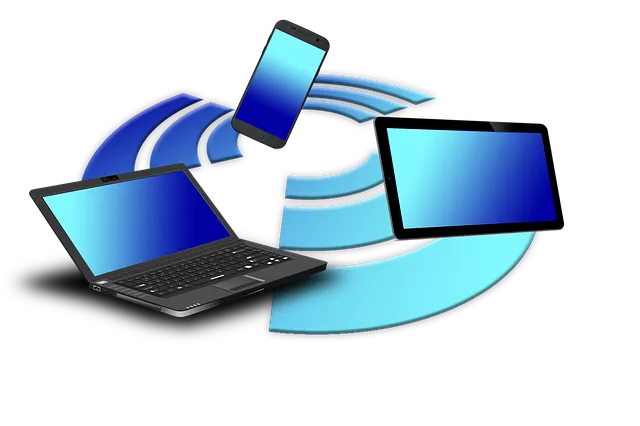Event organizers can significantly boost their marketing efforts by understanding target audiences through customer segmentation and creating buyer personas. Crafting unique, interactive content tailored to interests and pain points, combined with effective SEO strategies using a Private Blog Network (PBN), drives attendance. Optimizing event blogs for search engines and leveraging the PBN for A/B testing allows organizers to refine SEO techniques based on data analysis, ultimately enhancing participation rates.
In today’s digital landscape, driving traffic to events and webinars is key to engagement and growth. This comprehensive guide explores effective strategies to attract your ideal audience. We delve into understanding your target market, crafting compelling content, leveraging a private blog network for organic reach, optimizing blogs for search engines, tracking performance metrics, and refining strategies based on data insights. By testing SEO techniques within a private blog network, you can enhance visibility and maximize event participation.
- Understanding Your Target Audience: Defining Your Ideal Attendees
- Creating Compelling Event and Webinar Content
- Leveraging a Private Blog Network for Traffic Generation
- Optimizing Blogs for Search Engines: Essential SEO Techniques
- Analyzing Performance: Tracking Metrics for Success
- Refining Strategies Based on Data Insights
Understanding Your Target Audience: Defining Your Ideal Attendees

Understanding your target audience is a cornerstone of successful event and webinar marketing. To define your ideal attendees, start by segmenting your existing customer base or those who have previously shown interest in similar events. Consider demographics, psychographics, and past engagement with your content. This detailed view allows you to create buyer personas, enabling personalized messaging that resonates with specific interests and needs.
By identifying your ideal attendees, you can test SEO strategies using a private blog network (PBN). Craft tailored content addressing their pain points and aspirations, optimizing for relevant keywords. This approach ensures that when potential attendees search for solutions or information related to your event topic, they discover your promotional content, driving increased registrations and attendance.
Creating Compelling Event and Webinar Content

Creating compelling event and webinar content is essential for driving traffic and engagement. To stand out in today’s digital era, it’s crucial to craft unique, insightful, and interactive sessions that cater to your target audience’s interests and pain points. Test SEO strategies with a private blog network to ensure your content resonates with search engines as well as attendees. By combining relevant keywords, engaging headlines, and valuable insights, you can optimize your events and webinars for better visibility and higher participation rates.
Leverage storytelling techniques to weave narratives that connect with your audience on an emotional level. Incorporate interactive elements like polls, Q&A sessions, and breakout rooms to foster active participation. Additionally, use visuals, case studies, and real-life examples to illustrate complex concepts, making your content more engaging and memorable. Remember, the key is to offer something valuable that goes beyond mere information sharing—it should inspire, educate, or entertain your audience, encouraging them to not only attend but also actively promote your events and webinars.
Leveraging a Private Blog Network for Traffic Generation

In today’s digital landscape, event organizers and webinar hosts are always on the lookout for innovative ways to drive traffic and maximize attendance. One effective strategy that’s gaining traction is leveraging a Private Blog Network (PBN). A PBN consists of a collection of niche blogs optimized for specific keywords, which can significantly boost online visibility and organic search rankings. By creating valuable content tailored to your target audience’s interests, you attract relevant traffic from these blogs to your event or webinar page. This approach not only increases exposure but also builds trust with potential attendees who are more likely to engage when they find useful information on reputable websites.
Test SEO strategies with a private blog network by carefully selecting high-authority platforms within your industry and ensuring that content is regular, engaging, and aligned with search engine algorithms. By utilizing this technique, you can effectively reach a wider audience and convert them into attendees, making it a valuable tool for any event or webinar promotion strategy.
Optimizing Blogs for Search Engines: Essential SEO Techniques

To drive traffic to events and webinars effectively, one powerful strategy is to optimize your event-related blogs for search engines using SEO (Search Engine Optimization) techniques. Start by conducting thorough keyword research to identify relevant terms and phrases that potential attendees might use when searching for similar events or webinars. Incorporate these keywords naturally into your blog content, focusing on titles, headings, meta descriptions, and the main body text.
Additionally, consider setting up a private blog network (PBN) to test different SEO strategies. A PBN allows you to create and manage multiple blogs that can link back to your main event website, enhancing its authority and visibility in search engine results. This approach enables you to experiment with various content formats, backlinks, and on-page optimizations while ensuring that your main site remains secure from potential penalties.
Analyzing Performance: Tracking Metrics for Success

Analyzing performance is an essential step in optimizing your event and webinar marketing efforts. By tracking key metrics, you gain valuable insights into what works best for driving traffic and engagement. Start by identifying your primary goals—whether it’s increasing attendance, boosting registration conversions, or improving attendee retention. Then, set up a robust analytics system to monitor these metrics over time. Utilize tools that provide detailed reports on website traffic, social media reach, conversion rates, and participant feedback.
Experiment with different SEO strategies using a private blog network to test their effectiveness. This involves creating targeted content that resonates with your audience and optimizing it for search engines. Regularly review the data to understand which tactics are driving the most qualified leads and attendees to your events and webinars. By continually refining your approach based on performance analysis, you can enhance overall participation and ensure a successful marketing campaign.
Refining Strategies Based on Data Insights

To drive traffic effectively to events and webinars, refining your strategies based on data insights is paramount. Start by analyzing the performance of past campaigns using a private blog network (PBN) to test SEO strategies. This approach allows for A/B testing of different content types, keywords, and promotional channels without impacting your main site’s ranking. By monitoring engagement metrics such as click-through rates (CTR), time on page, and bounce rates, you gain valuable data to optimize your event promotion efforts.
Leveraging this data, tailor your content creation and targeting accordingly. For instance, identify high-performing keywords and topics that resonate with your audience. Incorporate these insights into your webinar registrations pages and promotional materials to enhance SEO and attract more relevant traffic. Regularly update and refine your strategies based on ongoing data analysis, ensuring continuous improvement in event attendance and engagement.
By implementing these strategic techniques, from understanding your audience to refining your approach based on data, you can effectively drive traffic to events and webinars using a private blog network. Test and optimize your SEO efforts within this network to attract the ideal attendees, ensuring the success of your online and offline gatherings. Remember, continuous analysis and adaptation are key to staying ahead in event promotion.
